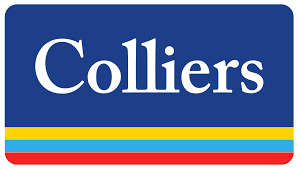Introduction
Businesses are on the lookout of solutions that would help their finance function consolidate and operate efficiently. With mergers and acquisitions taking place, businesses choosing to diversify and grow beyond their own country or place of origin, integration of teams, technology and practices become essential to remain operationally economically.
Having finance operations in multiple location or countries, working on multiple systems, following inconsistent and varied practices leads to inefficiencies in operations, heavy investment in governance and yet doesn’t provide adequate protection against compliance exposure. With every new acquisition, merger, restructuring or opening up of new branch, the effect of inefficiencies multiplies.
Current Trends
In an attempt to keep up with growing shareholders expectations and fierce competition, businesses will continue to explore inorganic ways to build capabilities for future growth. Consolidation and unified code of operations is essential for smooth running of businesses and if not timely addressed, could impact business value and effectiveness. To put things into perspective, 100% of the top quartile companies worldwide and 90% of Fortune 500 companies use shared service centres with 60% of the companies delivering cost reduction greater than 35%.
Such conditions leads to several queries that arise:
- Are there ways to consolidate effectively?
- Can automation address the concerns around the need for optimization without having to look for consolidation?
- How to build a business case for FSS?
- What are the challenges, best practices and benefits involved?
Finance Shared Service (FSS)
Finance Shared Services is the consolidation and standardization of finance operations that are used by multiple units, departments or branches, of the same organization under one roof. Besides cost optimization, standardization, ease of governance and better control over compliances, FSS centers manage to add value in helping businesses tap into the right talent pool, provide agility in scaling up or down as business need changes, enhance productivity, provide timely closure of books of accounts and ease of system integration. FSS models provide strategic flexibility to the organizations and the benefits derived are both quantitative and qualitative.
Finance Shared Service vs. Automation
Even though automation seems to be an option to optimize, organizations struggle to derive meaningful benefits particularly in fragmented and decentralized set-ups. Eventually lack of business cases rules out this option. Size of operations and level of complexity is an important factor to derive benefits from automation. Setting up finance shared service acts as a stepping stone to achieve optimization in two logical phases. In the first phase, through consolidation and standardization and then in the second phase through automation as by now processes are structured and have scaled up to deploy bots.
Forming a business case for FSS
One pertinent question that comes up and is an essential factor to build a business case for finance shared service center set-up is the potential of savings that could arise by moving from decentralized set-up to shared service set-up. Savings are directly proportional to the percentage of roles that can be moved. The graph below summarizes the same. As each organization is set-up differently and operates under different conditions, it is advisable to take services of an expert in determining true potential specific to your organization.

Reference: https://www2.deloitte.com/content/dam/Deloitte/dk/Documents/finance/SSC-Handbook-%20Hit-the-Road.pdf
Challenges in setting up FSS Center
Transforming to FSS is a decision that should not be taken lightly and requires strong management commitment to drive a successful implementation. There are several barriers to the implementation that should be considered in the feasibility study and explored further in subsequent phases. Making organization ready for change is crucial and the best way to do that is to have existing team by your side. Organizations have transformed successfully by inviting team members in helping through the journey by taking up key responsibilities. The outcome of this process should result in identification and setting up of relevant roles and clear responsibilities needed to go through the change process. The graph below shows some primary obstacles to successful change.

Reference: https://www2.deloitte.com/content/dam/Deloitte/dk/Documents/finance/SSC-Handbook-%20Hit-the-Road.pdf
The next step is to choose the right supplier. How is it that deployment of best methodology in vendor selection and selecting best vendor does not guarantee smooth transition and ongoing delivery? In the process of scribbling through vendor pitches and capabilities and best price on offer, one aspect, which is the almost invariably ignored and probably the most important aspect of decision making is vendor’s ability to give your business utmost attention, provide an environment that allows its team to work at arm’s length alongside with your organization and are aligned to your vision and goals.
Post vendor selection, the next important aspects of the journey is staff selection. Vendors who have managed to engage their clients in selection process have displayed greater success in achieving the outcomes.
And last but not the least, setting the right expectation and success criteria is of utmost important. Having expectations higher than reality is not only going to result in failed outcomes but also creates a permanent dent in team culture and relationships.
Benefits of FSS Models
While global organizations have managed to extract significant benefits through shared service set-up, as listed below, it should not be assumed that all benefits become applicable in for entities as this will depend on your organization’s condition and the customized plan that you choose for the journey. However, it must be noted that you will always have the option to exercise any of the benefits, at any stage of the journey, even if not in the original plan, provided your vendor / partner is agile, culturally fit and is in position to give your business utmost importance. This is where vendor selection is extremely important.
- Increases efficiency and helps organization reap best return on investment on technology with decreased labor costs and retained sense of control
- Boosts the decision support, increases data warehouse data efficiency, leverages specialist skills and improves the controlled environment
- Helps organizations control the financial services outcomes that are measurable with data analytics. Shared service models make the ROI calculation easy by comparison of previous data and industry benchmarks for KPIs.
- Decrease the cost of operations as instead of distributed accounting departments, it makes the financial operation process from one centralized location making the flow more flexible and agile.
- Combining multiple finance tasks under one roof allows a business to stop housing separate finance teams in separate physical offices, which frees up space and overhead expenses that can be put to better use generating more revenue. Centralization also creates more understanding of processes and allows for better definition and delegation of tasks, which helps eliminate inefficient processes and redundancy and reduces the number of FTEs required to complete a process.
- Centralization also consolidates management’s responsibilities to fewer people within the organization, allowing for faster identification and resolution of issues, and allows for cross-training of individuals working on different teams to serve as back-ups.
- When certain services, programs and processes are distributed, it is very difficult to understand the true value and associated cost of the service. Centralization promotes common understanding, definition, service level agreements and associated metrics. This increases visibility into the cost/value equation of internal services.
- The more countries you operate in, the more regulation must be accounted for. Best-practice governance models let finance teams gather the right information for each market, understand the legislative landscape, and apply synergies to what they’re doing under similar conditions in another country or region.
Future of FSS Model
With 5G network and cloud computing, single instance ERPs becoming part of our everyday life, the future of FSS models are being enabled in the present. With FSS model, the organizations are becoming more global and digital with more efficient services resulting in retention and loyalty with customer service and high impacted business outcomes. As predicted by the World Economic Forum that by 2025, all machines and humans will work equal hours in most of the occupation, which implies FSS models will contribute towards more reduced cost and effective service delivery that is agile, flexible and efficient.

































